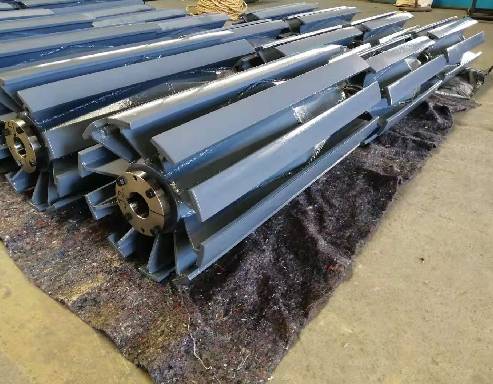 Afrikaans
Afrikaans  Albanian
Albanian  Amharic
Amharic  Arabic
Arabic  Armenian
Armenian  Azerbaijani
Azerbaijani  Basque
Basque  Belarusian
Belarusian  Bengali
Bengali  Bosnian
Bosnian  Bulgarian
Bulgarian  Catalan
Catalan  Cebuano
Cebuano  Corsican
Corsican  Croatian
Croatian  Czech
Czech  Danish
Danish  Dutch
Dutch  English
English  Esperanto
Esperanto  Estonian
Estonian  Finnish
Finnish  French
French  Frisian
Frisian  Galician
Galician  Georgian
Georgian  German
German  Greek
Greek  Gujarati
Gujarati  Haitian Creole
Haitian Creole  hausa
hausa  hawaiian
hawaiian  Hebrew
Hebrew  Hindi
Hindi  Miao
Miao  Hungarian
Hungarian  Icelandic
Icelandic  igbo
igbo  Indonesian
Indonesian  irish
irish  Italian
Italian  Japanese
Japanese  Javanese
Javanese  Kannada
Kannada  kazakh
kazakh  Khmer
Khmer  Rwandese
Rwandese  Korean
Korean  Kurdish
Kurdish  Kyrgyz
Kyrgyz  Lao
Lao  Latin
Latin  Latvian
Latvian  Lithuanian
Lithuanian  Luxembourgish
Luxembourgish  Macedonian
Macedonian  Malgashi
Malgashi  Malay
Malay  Malayalam
Malayalam  Maltese
Maltese  Maori
Maori  Marathi
Marathi  Mongolian
Mongolian  Myanmar
Myanmar  Nepali
Nepali  Norwegian
Norwegian  Norwegian
Norwegian  Occitan
Occitan  Pashto
Pashto  Persian
Persian  Polish
Polish  Portuguese
Portuguese  Punjabi
Punjabi  Romanian
Romanian  Russian
Russian  Samoan
Samoan  Scottish Gaelic
Scottish Gaelic  Serbian
Serbian  Sesotho
Sesotho  Shona
Shona  Sindhi
Sindhi  Sinhala
Sinhala  Slovak
Slovak  Slovenian
Slovenian  Somali
Somali  Spanish
Spanish  Sundanese
Sundanese  Swahili
Swahili  Swedish
Swedish  Tagalog
Tagalog  Tajik
Tajik  Tamil
Tamil  Tatar
Tatar  Telugu
Telugu  Thai
Thai  Turkish
Turkish  Turkmen
Turkmen  Ukrainian
Ukrainian  Urdu
Urdu  Uighur
Uighur  Uzbek
Uzbek  Vietnamese
Vietnamese  Welsh
Welsh  Bantu
Bantu  Yiddish
Yiddish  Yoruba
Yoruba  Zulu
Zulu rollers and idlers
Rollers and Idlers The Unsung Heroes of Conveyor Systems
In the realm of material handling and transportation, the efficiency and effectiveness of a conveyor system are paramount. At the heart of these systems lies a simple yet crucial component rollers and idlers. Though often overlooked, these elements play a vital role in the smooth operation and longevity of conveyor belts across various industries.
Rollers, typically made of metal or plastic, serve as the moving parts of a conveyor system, enabling the belt to transport materials effectively. They reduce friction between the conveyor belt and the materials being moved, ensuring that the system operates smoothly and efficiently. The design of rollers varies according to the specific needs of the application, including their size, shape, and the material they are made from. For instance, in heavy-duty applications, larger and sturdier rollers are used to accommodate the increased weight and stress. Conversely, lighter materials utilize smaller rollers, enhancing speed and agility.
Idlers, on the other hand, are stationary support elements that help maintain the tension and alignment of the conveyor belt. They ensure that the belt remains in place, reducing the risk of slippage and wear. Idlers also contribute to the smooth operation of the system by providing additional support points for the belt as it moves. These components are crucial in maintaining the overall integrity and performance of the conveyor system.
rollers and idlers

The interplay between rollers and idlers is fundamental to achieving optimal performance. For instance, as a conveyor belt carries heavy loads, the rollers must effectively distribute the weight across the belt. Idlers assist in balancing this weight by providing necessary support at various points along the conveyor’s length. This combination minimizes wear and tear on the belt and components, significantly extending their lifespan.
In addition to their functional roles, rollers and idlers have evolved with advancements in technology. Today, many are equipped with features such as self-lubrication, weatherproofing, and enhanced corrosion resistance. These innovations ensure that conveyor systems can operate in various environments, from manufacturing facilities to outdoor mining operations.
Furthermore, maintenance of rollers and idlers is essential for the uninterrupted functioning of a conveyor system. Regular inspections can help identify wear and damage, allowing for timely replacements. Preventive maintenance ensures that the operational efficiency is not compromised, reducing the likelihood of costly downtimes.
In conclusion, while they may not take the spotlight, rollers and idlers are the backbone of conveyor systems in numerous industries. Their roles in ensuring smooth transport, maintaining belt tension, and enhancing overall efficiency cannot be overstated. As the manufacturing and logistics worlds continue to evolve, so too will the technology and design of rollers and idlers, ensuring these unsung heroes remain pivotal to the future of material handling. Understanding their significance will promote better practices in installation, maintenance, and operation, leading to more reliable and efficient conveyor systems.
-
Revolutionizing Conveyor Reliability with Advanced Rubber Lagging PulleysNewsJul.22,2025
-
Powering Precision and Durability with Expert Manufacturers of Conveyor ComponentsNewsJul.22,2025
-
Optimizing Conveyor Systems with Advanced Conveyor AccessoriesNewsJul.22,2025
-
Maximize Conveyor Efficiency with Quality Conveyor Idler PulleysNewsJul.22,2025
-
Future-Proof Your Conveyor System with High-Performance Polyurethane RollerNewsJul.22,2025
-
Driving Efficiency Forward with Quality Idlers and RollersNewsJul.22,2025





























